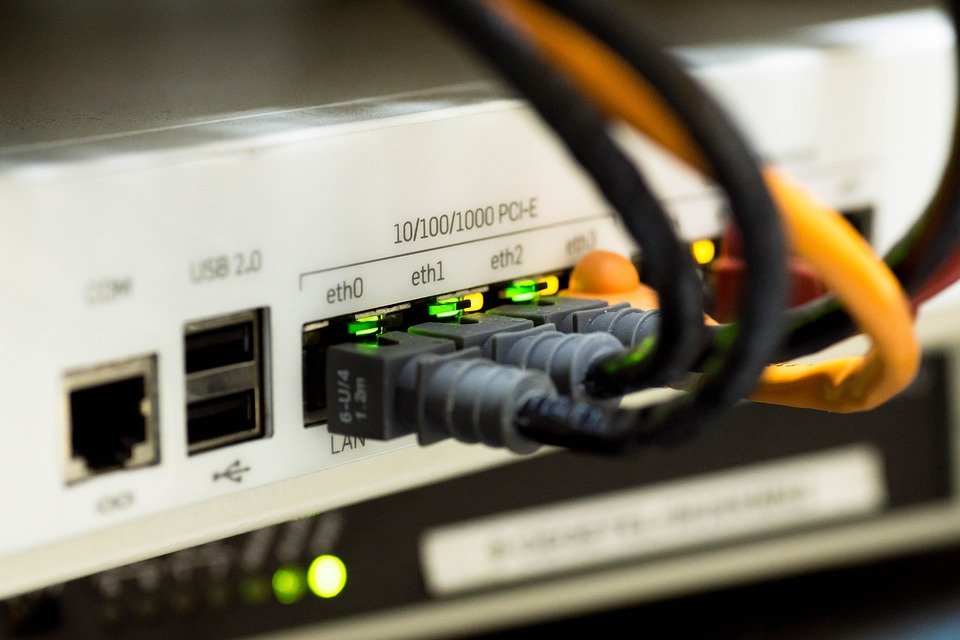Do you want to know the best ways to wire your home internet ethernet cable? Then check out our helpful strategies below.
Even though the mesh networks and wireless networks are getting better every year, they do not come close to a wired network connection. A wired internet/network connection is known to have the highest speed with very low latency and a stable connection. The only problem with this connection is that you have to manage the wires effectively.
Usually, people have their cables go through the house walls. Remodeling your home can be troublesome if you already have a wired internet ethernet cable. In this article, we are going to help you to finish your wiring of the ethernet cable without any trouble.

Preplan Your Home Network Wiring
Just like any other project, this one also requires a good preplan. Just knowing the wire connection’s location will do you no good. Here are some of the steps you can follow.
- Make an easy-to-follow floorplan of your house: You can easily visualize every wired network connection if you follow a floor plan.
- Finalize the locations of the ethernet connections: When you are finalizing your locations of the ethernet connections with an electrician, think about the future. You might need connections in other rooms in the not-so-distant future.
- Know where you are placing the switch and router: A switch can be placed on every floor or can run all cables into a single location. It is recommended to have all connections in a single place. In that way, you will be able to use the switches or router more effectively.
- Decide on good ways to run your cables: The crawlspace and attic are both great places to run cables.
- Know your ethernet ports in every location of the house: Having two ethernet connections in every location is recommended. In that way, the cost of the UTP cables will not be expensive.
Basic Points Regarding Ethernet Cable Wiring
Now that you know how you should preplan your wiring of the ethernet cable, here are some of the basic points that you need to pay attention to.
Reserve Sockets
There are many areas available in every house to reserve cable sockets. The bedrooms and living room should have one or two networking cables, telephone lines, and TV cable sockets. All of those cables should be distributed in various walls to distribute the electrical furnishings. The bathroom and kitchen could have a telephone jack as required.
Concentrated Control
With today’s modern technology, many houses have more than one phone installed or many machines online. To have the best quality of maintenance and docking, you must have a centralized or concentrated control unit for your home’s internet ethernet and phone line cables. A simple power distribution box can work as a centralized control panel for your wiring as every LAN connection will have to go through that small dock.
Moisture Proof Wires
This is very important as it will determine the lifespan of your wires. Just make sure you are installing your wires above 30cm from the ground to avoid any moisture. Before selecting cables, go for the ones with a strong sleeve that is coated nicely.
Distance of Strong-Current Cables
Low voltage electrical signaled wires will perform badly if they are tangled up with high voltage electrical wires. Ethernet cables have low voltage electrical wires, so it is recommended to have separate lines for the ethernet wires and the power cables.
Required Tools
To achieve the best wiring of your ethernet cables, you have to use the correct tools. Some of the must and optional tools are:
- Drill
- Ethernet crimping tool
- Hole saw or paddle bit
- Pointed hand saw
- Fish tape or strong string
- Pencil
- Label maker
- Sharpietype marker
- Stud finder
- Ruler
- Cable tester or laptop
- Screwdriver
Now let’s proceed to wire your ethernet cable with these simple and easy steps,
Step 1: Organize the Wall Plates
Once you have selected a place to mount the box, you can draw lines on the selected walls and cut them. A pointed hand saw will cut through drywall easily without drilling holes. After you have created a hole, you can put a box into the hole and then insert a wall plate, finishing it off with clamps. Do this same step for all other selected locations for ethernet cable wiring.
Step 2: Run the Cables
There are several ways to run the ethernet cables, but we recommend one method. You will be able to find the correct lengths needed for every run. Run one cable to every single room from the distribution room. After doing it, you will be able to run all of them together with an improved connection when you are done setting up the wires. Use a Sharpie to label the ends of cables when you are done running them.
Additionally, you can drill through the wall top plates to drop the cables in the wall’s cut holes. Use those holes to string more cable and measure the lengths for every run.
Step 3: Connect the Wires
After you finish running the cables, all you have to do is connect them to the patch panel or to the jacks. You can also have the raw cable connected directly to the switch with RJ-45 plug. But for a long-lasting solution, follow the example of a professional.
Many jacks and patch panels have diagrams with wire colors known as the T568A & T568B wiring standard. You can go for either of these, but make sure to use the same one on both ends. Use a screwdriver to connect the one you selected then punch the single wires.
Conclusion
Test every room’s connectivity to ensure the connections. Now that you are more familiar with the topic of wiring ethernet cables, you will have an easier time doing it. Just make sure that you are buying good keystone jacks and good quality cables to get the best ethernet service.
















